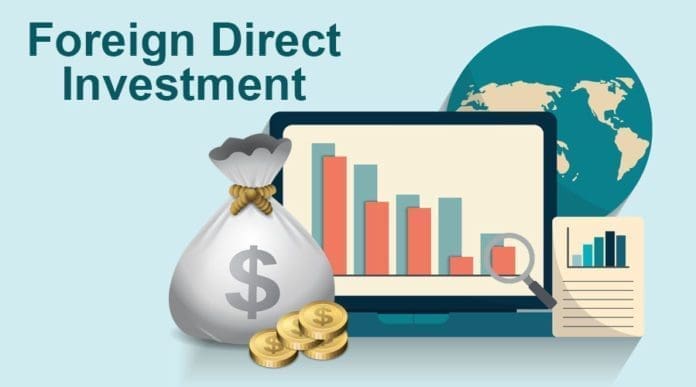Ghana has recorded a remarkable rebound in foreign direct investment, rising by 382 percent in the first half of 2025 compared to the same period last year. The surge signals renewed global confidence in the country’s economic prospects.
Data released by the Ghana Investment Promotion Centre (GIPC) shows that FDI inflows jumped from US$179.07 million in the first half of 2024 to US$862.96 million between January and June 2025. The increase comes amid ongoing economic reforms and efforts to restore macroeconomic stability following years of fiscal strain and global uncertainty.
According to GIPC, 76 new investment projects were registered during the first six months of the year. Once fully operational, these projects are projected to create 4,707 direct jobs across sectors such as manufacturing, services, general trading, and agriculture.
The manufacturing sector recorded the highest number of projects, with 32 registered in total. This underscores Ghana’s growing reputation as a light industrial hub in West Africa. However, general trading attracted the largest share of investment value, accounting for US$622.9 million of the total inflows. That’s more than 72 percent of all FDI recorded in the period.
In terms of investor origin, China maintained its position as Ghana’s leading source of new projects, registering 22 within the review period. It was followed by India with 14 projects, Nigeria with 8, and both the United Arab Emirates and the United Kingdom with 4 each. The United States registered three, while other investors came from Liberia, Mauritius, Singapore, and Turkey.
The sharp rise in inflows comes as Ghana continues to implement structural reforms under an International Monetary Fund backed program. These include fiscal consolidation, monetary tightening, and the restoration of business confidence through debt restructuring. And so far, the numbers suggest it’s working.
Economist Dr. Theo Acheampong told The Ghana Report the figures “reflect renewed investor optimism, particularly as Ghana’s economic fundamentals gradually stabilize.” He urged authorities to ensure that inflows translate into real jobs, local value addition, and equitable regional development.
Most of the registered projects are concentrated in Greater Accra and Ashanti regions, prompting calls for a more balanced approach that attracts investors to other parts of the country. Experts say the sustainability of Ghana’s FDI rebound will depend on how quickly registered projects transition from paper approvals to actual implementation.
There’s reason for caution here. Many projects in the past never materialized because of delays in permitting and land acquisition, according to industry observers. Local business consultant Ama Osei emphasized the importance of consistent monitoring and investor aftercare services to ensure long term results.
In response, the GIPC has pledged to improve transparency and coordination. Officials say a public monitoring system is being designed to track the progress of new projects and ensure compliance with Ghana’s investment laws. Whether that system gets implemented quickly enough remains to be seen.
If sustained, the current momentum could position Ghana as one of the leading FDI destinations in Sub-Saharan Africa in 2025. This would potentially boost job creation, technology transfer, and foreign exchange inflows. For now, the sharp rebound stands as one of the clearest signs that investor faith in the Ghanaian economy is being restored.
The question is whether Ghana can maintain this trajectory through the second half of the year, especially as global economic conditions remain uncertain and competition for investment dollars intensifies across the continent.
Source: newsghana.com.gh











